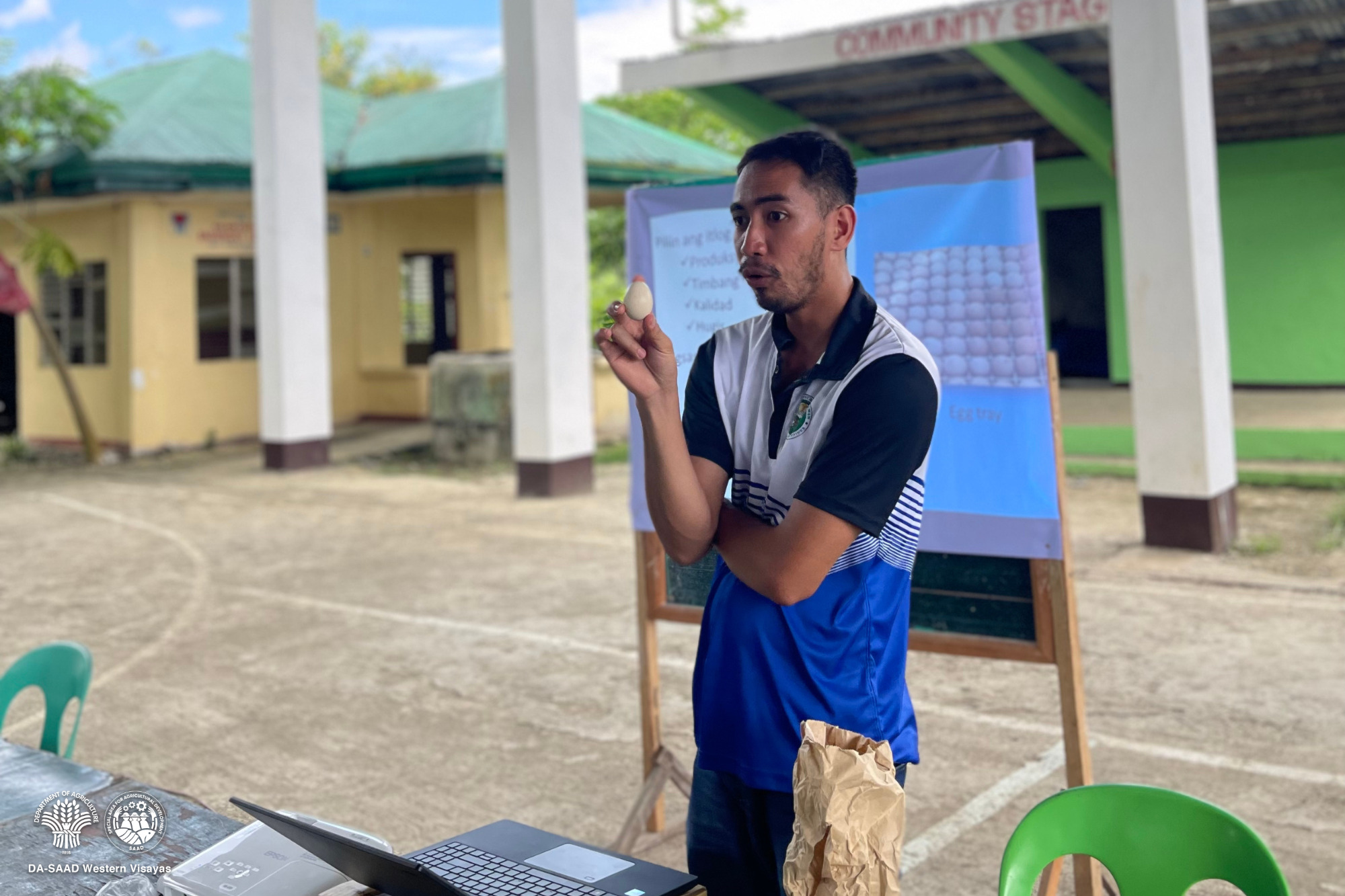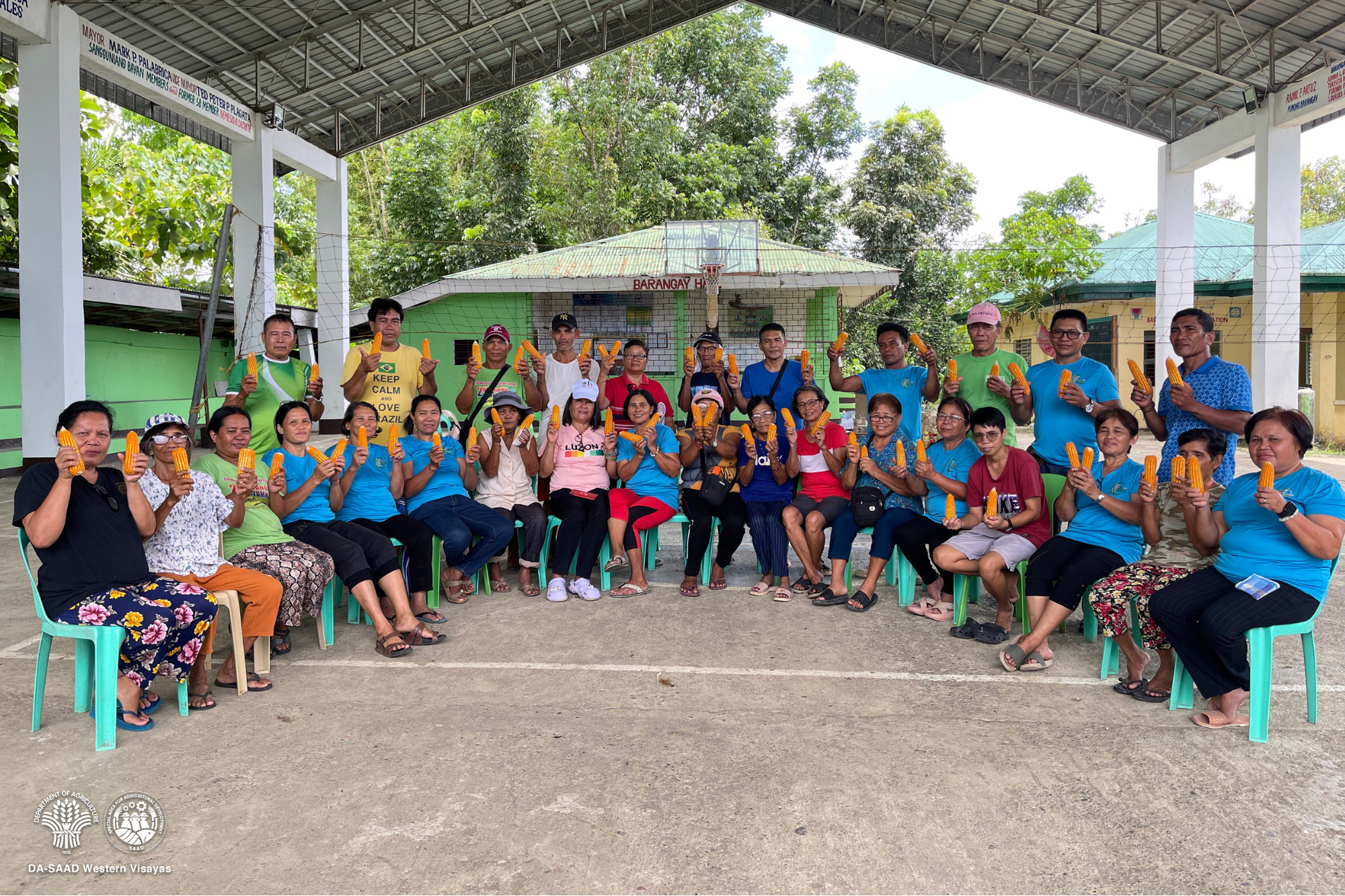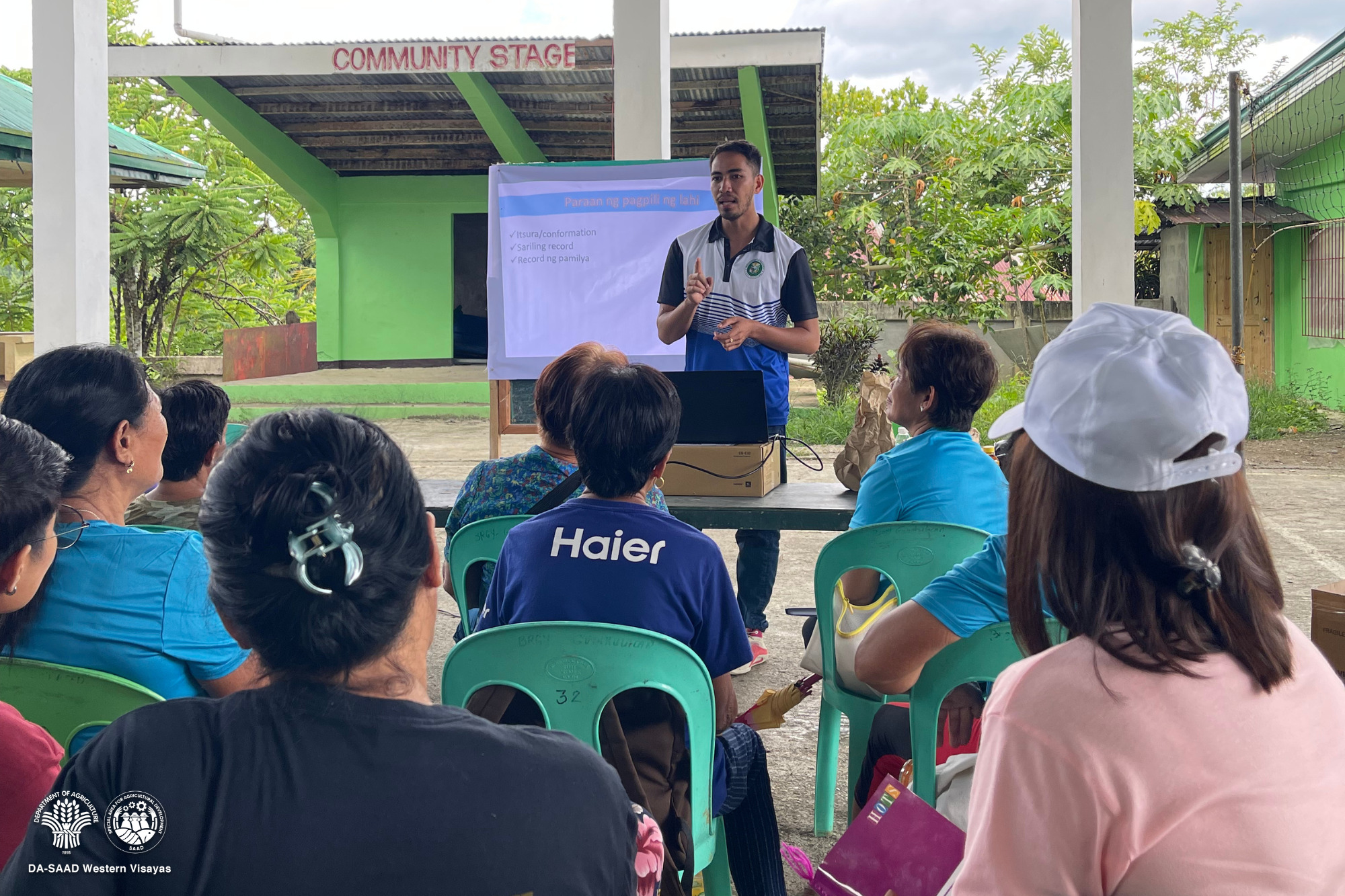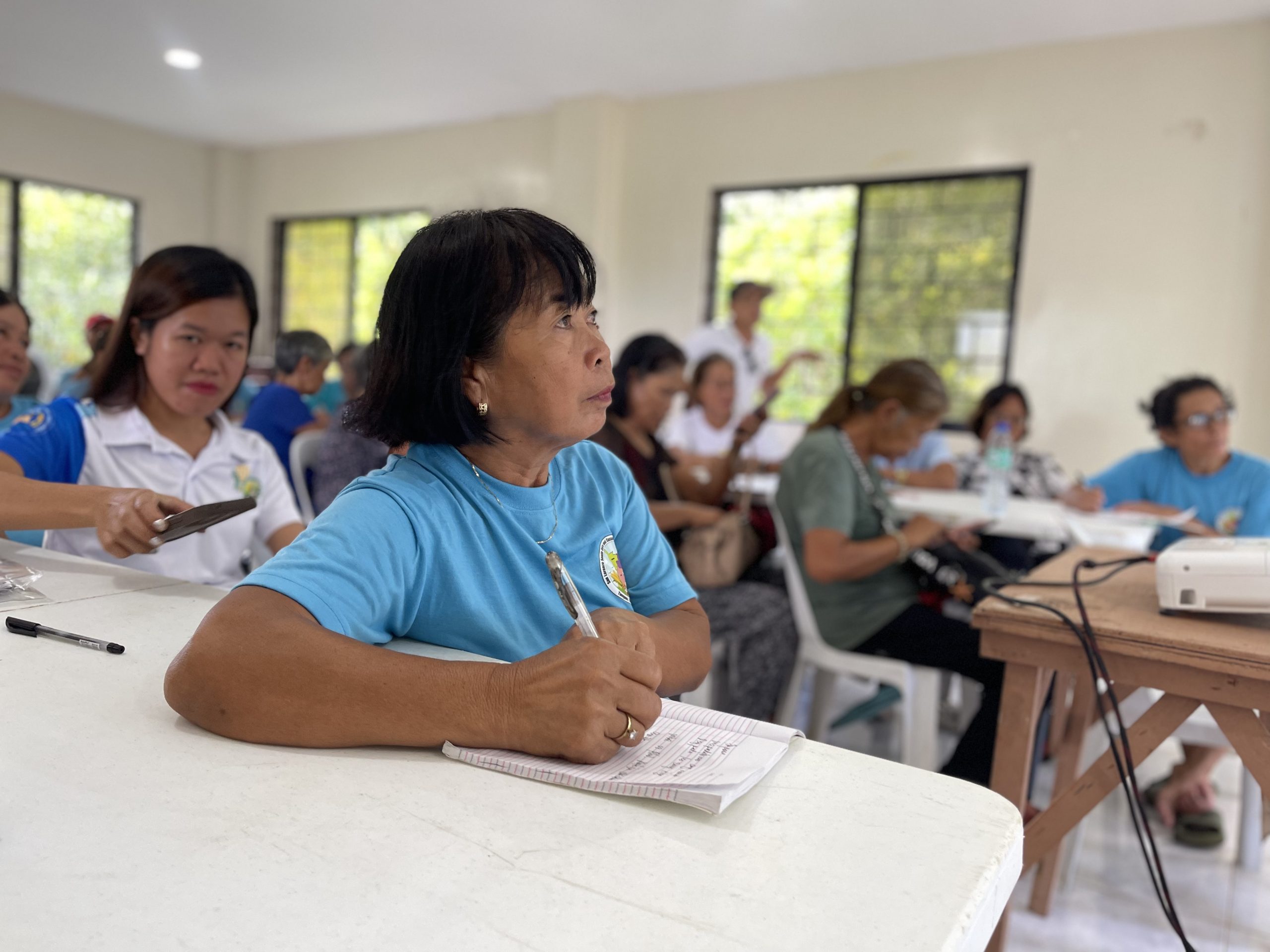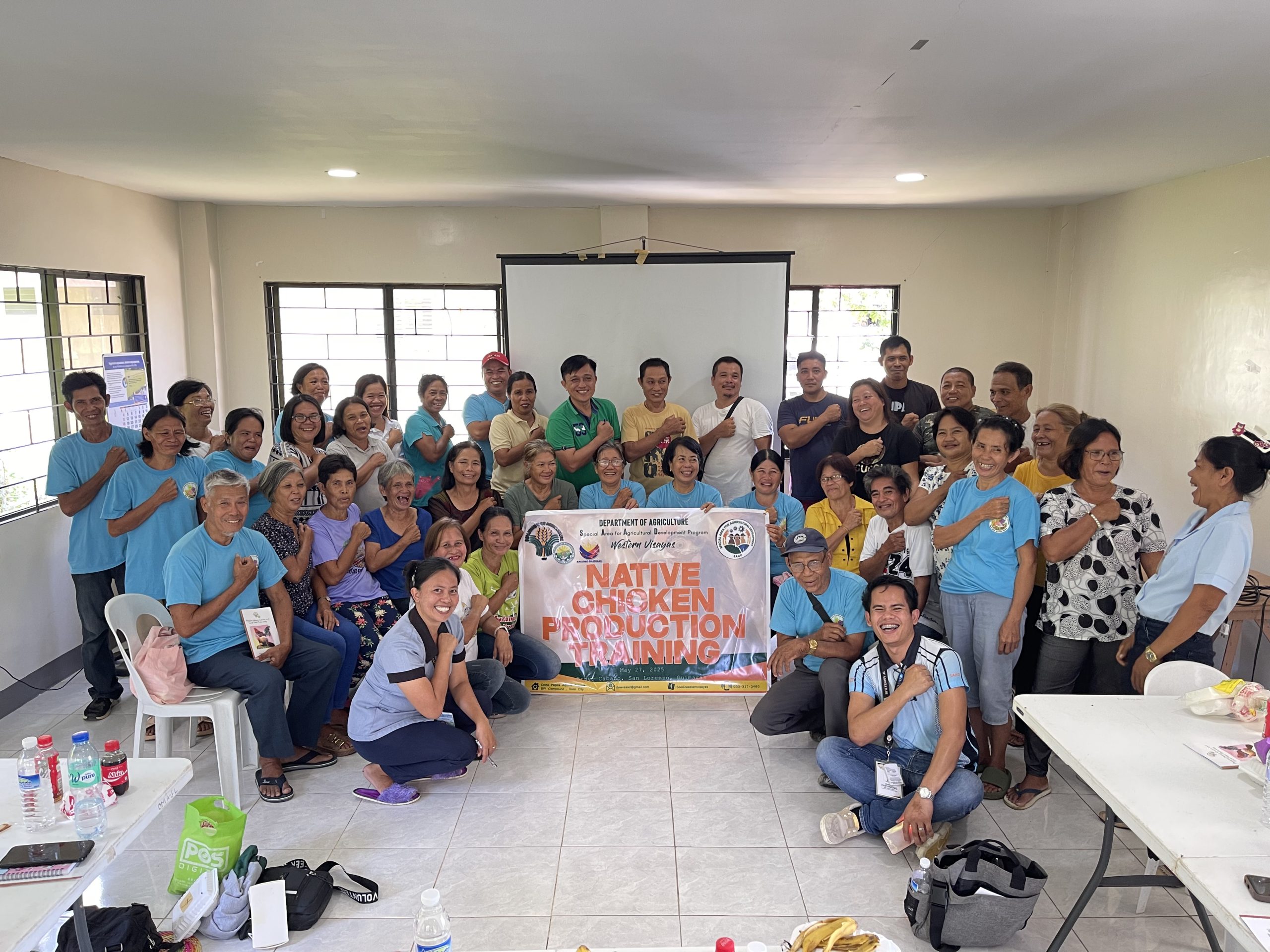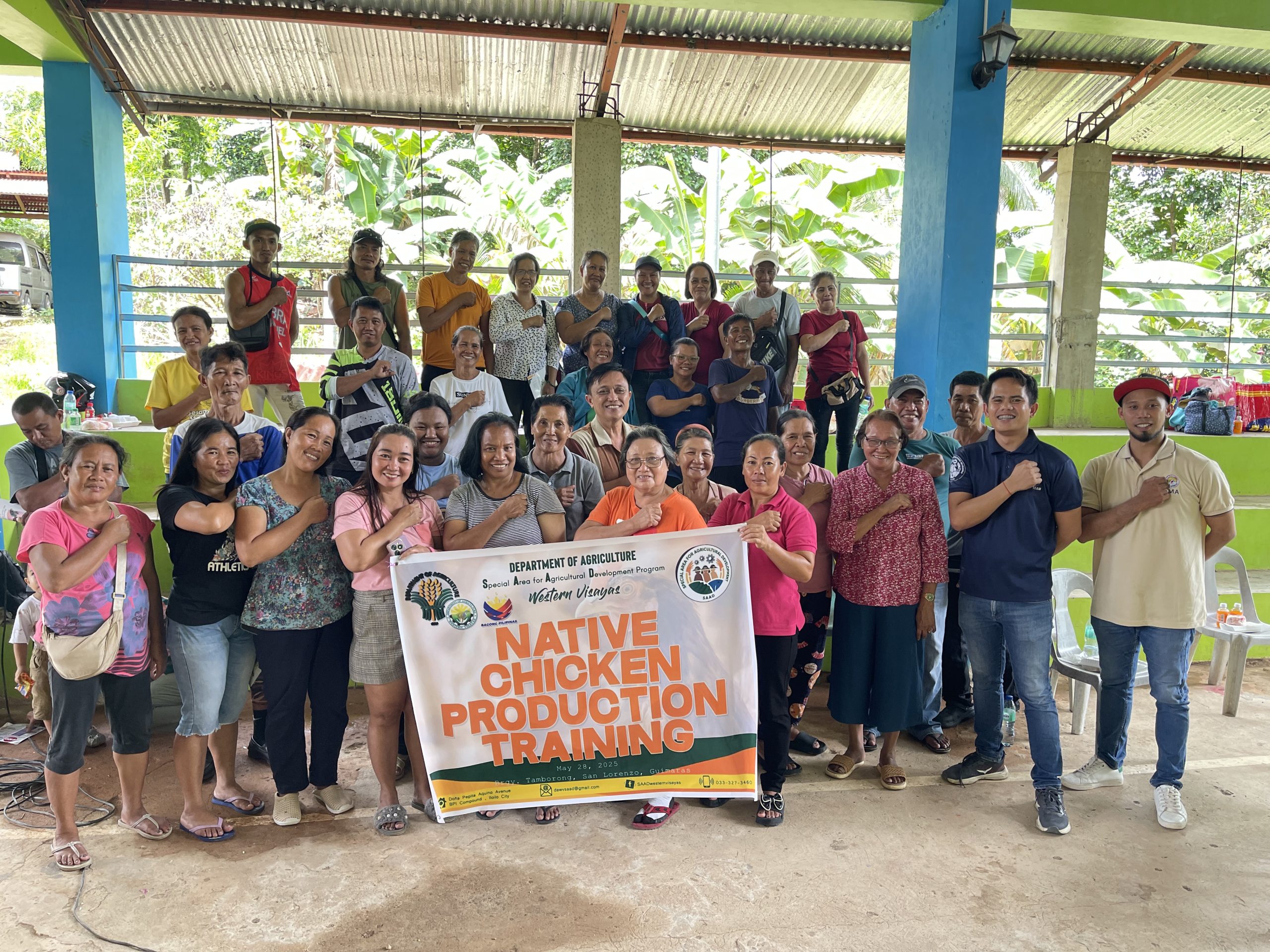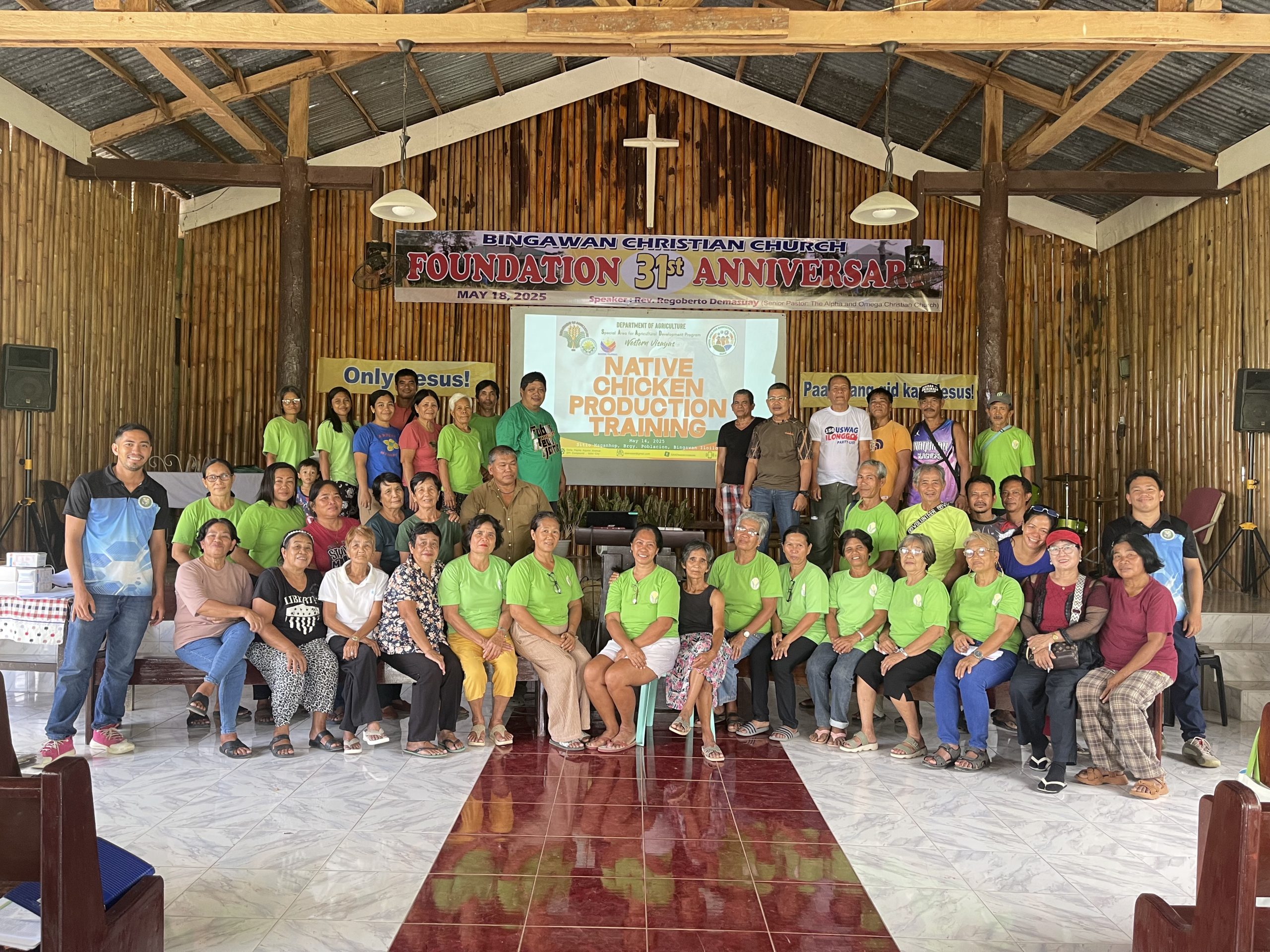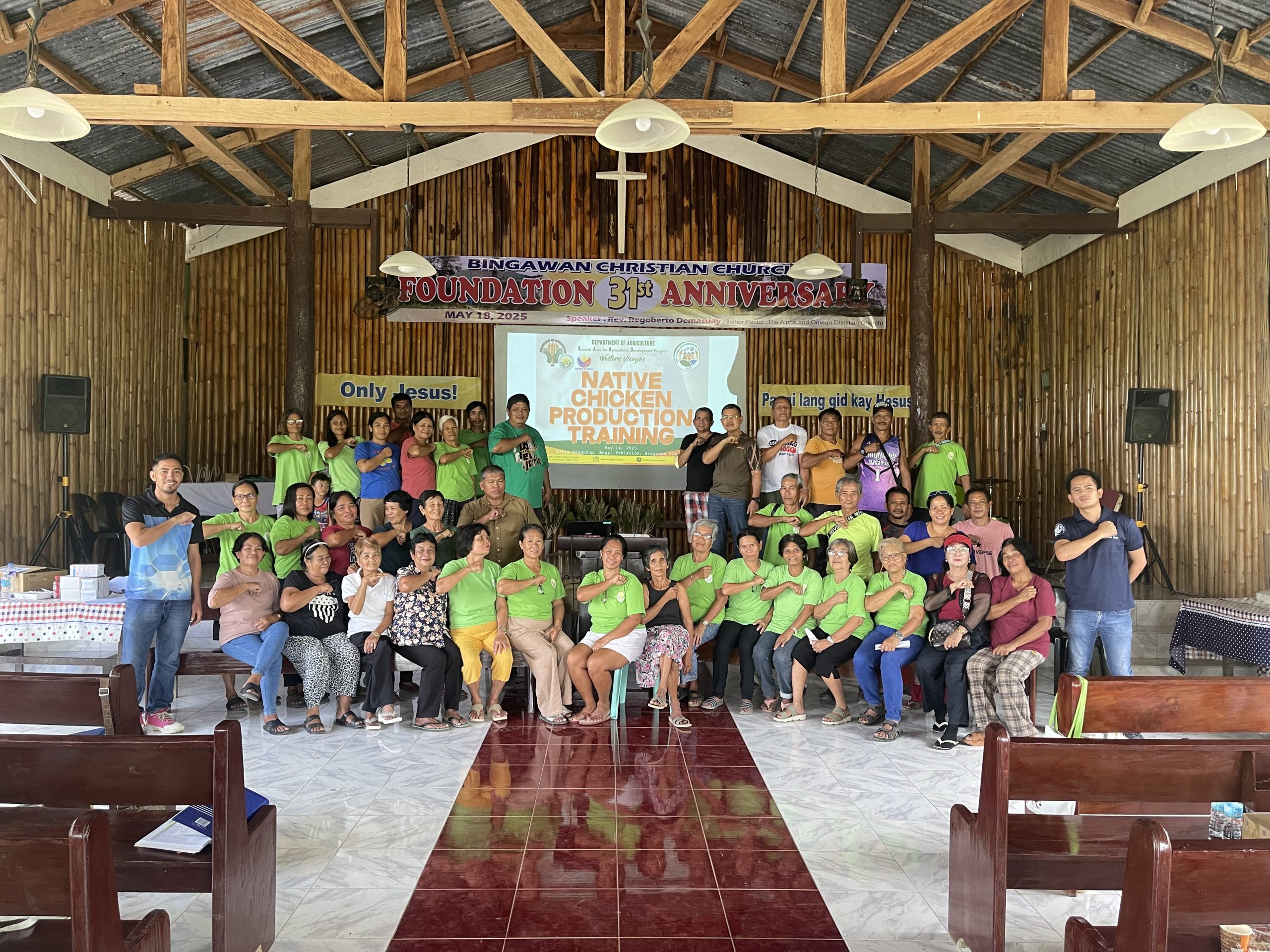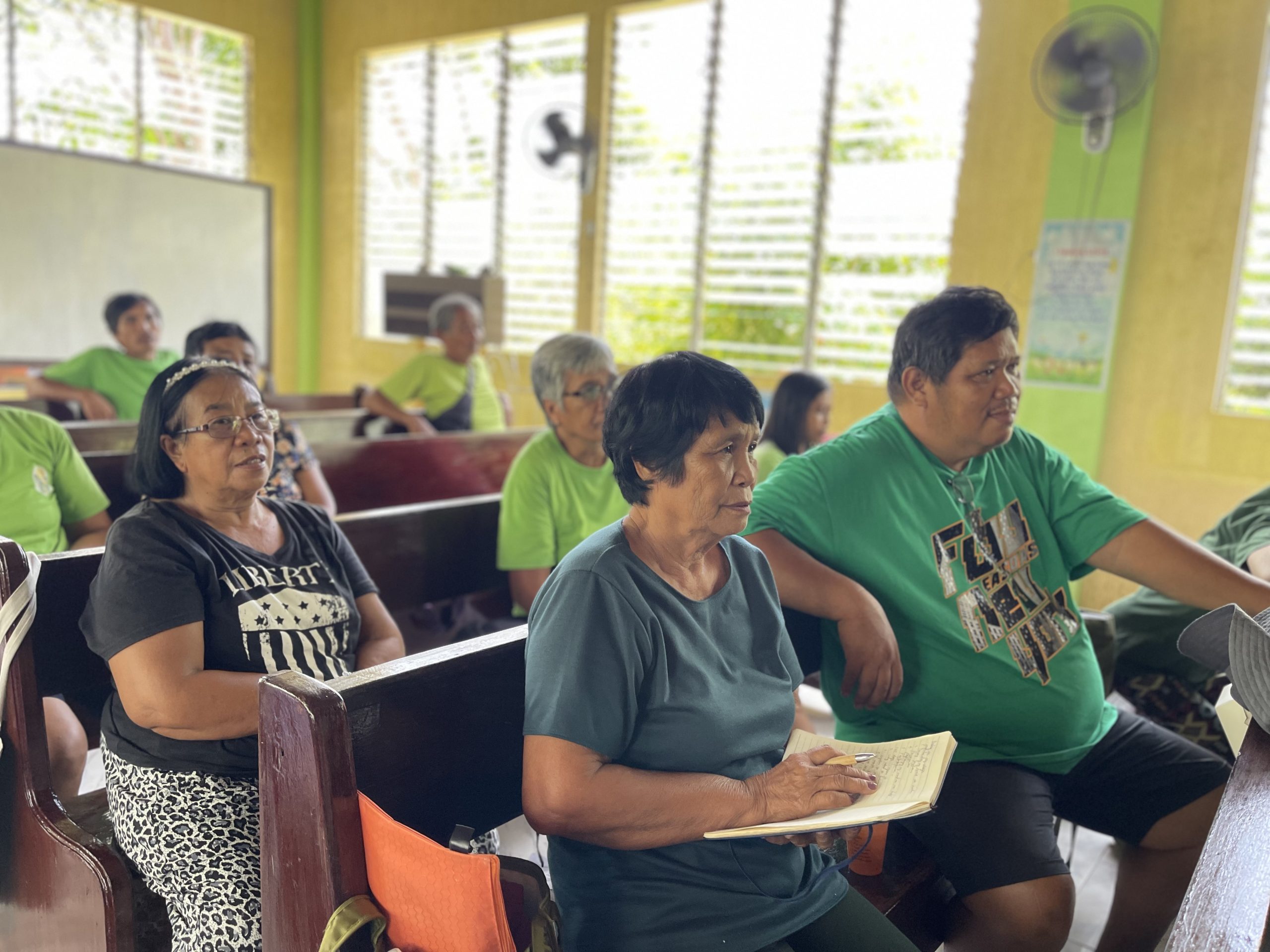As part of its ongoing support, the Department of Agriculture-Special Area for Agricultural Development (DA-SAAD) Western Visayas partnered with the Local Government Unit of Bingawan for production-related training which benefited 130 farmers from Guinhulacan Farmers Association (FA), Sitio Maganhop FA, and Tubod FA on May 14–15 and 21–22, 2025.
Table 1. Production-Related Trainings conducted in Bingawan
| Farmers Association | Livelihood Project to receive this FY 2025 | Training Provided | Date Conducted | Participants |
| Sitio Maganhop Farmers Association | Native Chicken Production | Native Chicken Production Training | May 14, 2025 | 40 |
| Guinhulacan Farmers Association | May 15, 2025 | 45 | ||
| Tubod Farmers Association | Corn Production | Corn Production Training | May 21, 2025 | 45 |
| Vegetable Production | Vegetable Production Training | May 22, 2025 | ||
TOTAL | 130 | |||
Said FAs will receive corn, vegetable, and native chicken production projects this year, which is only fitting to provide them with training focused on management practices for sustainable crop and poultry production.
Ms. Leira Joy Gallego and Mr. Lloyd C. Jaula, Agricultural Technologists from the Municipal Agriculture Office of Bingawan, both served as Resource Speakers in the four separate batches of training.
For native chicken production, Mr. Jaula introduced the different native animals and provided a brief background on the poultry inventory and production report of native chicken in the region. Leaning on the significant numbers, he enumerated the advantages of rearing this kind of poultry animal which include, but not limited to, the unique taste and flavor of native chicken meat, it being a good source of quality protein, adaptability of the animals to local conditions, and easy management requiring only low inputs/foragers.
He also tackled the characteristics and the specific genetic groups of native chicken in the country. Mr. Jaula then proceeded with the selection of good breeders, advised some practices on how to produce eggs using natural and artificial incubation, and continued with the establishment of an appropriate housing for the stocks. He concluded his lecture with biosecurity measures to prevent and counter diseases that could potentially affect the production.
Mr. Jaula, having served as a lecturer, was grateful for the opportunity to share his knowledge on native chicken production, “As an Agricultural Extension Worker, there is only one thing that I can assure them in the business. If they take it seriously, native chicken production could be a great enterprise. They could sell eggs, chicks, live and dressed native chicken and make use of its by-products.”
Meanwhile, Ms. Gallego discussed the fundamentals of vegetable production which range from the advantages of cultivating vegetables down to the different components of vegetable production. Among the essentials of production include land preparation, planting, fertilization, irrigation, weed management, and pest and disease management. In her discussion, she identified the different classifications of vegetables according to their plant parts (leafy, fruit, root, stem).
Her discussion on corn production focused more on its components such as selection of production area, capital for corn start-up, necessary labor, and considerations for marketing their corn produce.
While the LGU provided the technical persons who spearheaded the discussion, the program provided the resources needed and facilitated the whole duration of the activity. This partnership is one strategy to optimize resource use by coordinating efforts between the two parties.
Highlighting the importance of collaborations and shared efforts, Mr. Victor Castroverde Jr., Municipal Agriculturist of Bingawan, acknowledged the role of partnership in achieving sustainable development, “The recent production-related training in Bingawan under the DA-SAAD Program highlights the value of strong collaboration between the DA-SAAD and the local government. The LGU’s support by providing the knowledgeable Resource Person shows how shared efforts can lead to more meaningful and effective interventions. This is the kind of partnership that drives sustainable development forward, making sure that programs respond better to local needs that truly benefit the community.”
